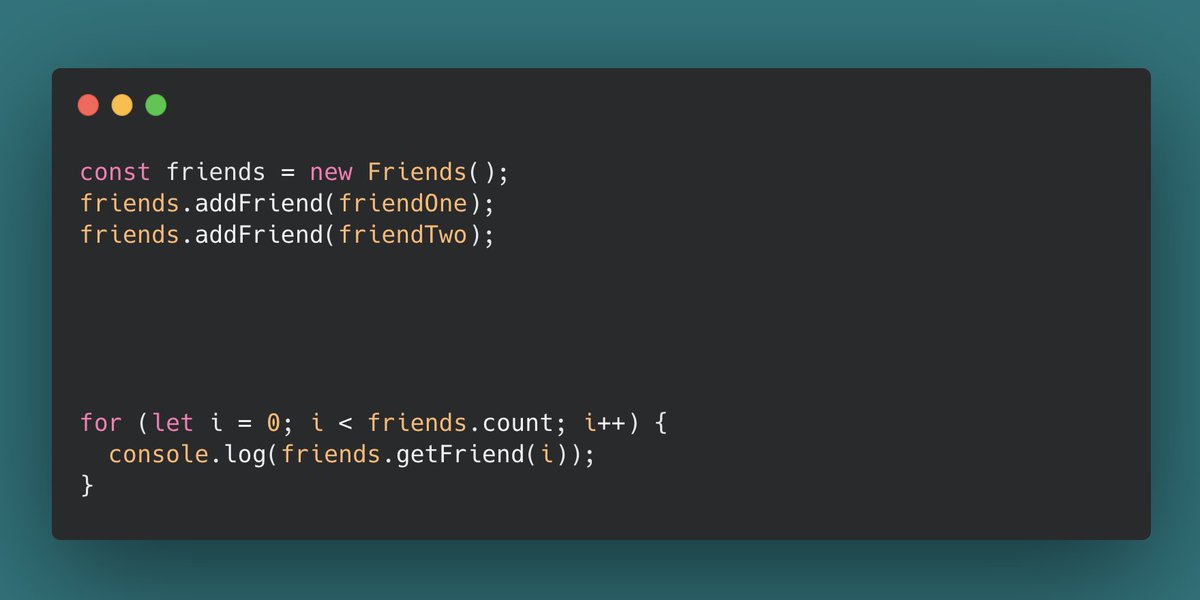
The Iterator Pattern
The iterator pattern is a design pattern which can be used to decouple algorithms from containers.
Let's take a look into what it actually is, how to apply it, and which problems it solves!
🧵👇
The iterator pattern is a design pattern which can be used to decouple algorithms from containers.
Let's take a look into what it actually is, how to apply it, and which problems it solves!
🧵👇
1⃣ What problems does it solve?
✅ The elements of an aggregate object should be accessed and traversed without exposing its representation (underlying data structure)
✅ New traversal operations should be defined for an aggregate object without changing its interface
✅ The elements of an aggregate object should be accessed and traversed without exposing its representation (underlying data structure)
✅ New traversal operations should be defined for an aggregate object without changing its interface
Those two points may sound a little complicated, but you can view it this way:
If you define access and traversal operations within an object's interface (its methods viewable and usable from the outside), it becomes inflexible.
If you define access and traversal operations within an object's interface (its methods viewable and usable from the outside), it becomes inflexible.
You simply can't change the interface without breaking some code, especially code which implements the interface!
This applies to all code. The one you've written, and the one others have written, third-parties so to say.
This applies to all code. The one you've written, and the one others have written, third-parties so to say.
But if you provide a common interface, which all containers and users can agree on, you can decouple access and traversal logic completely, and let your container only return one common interface!
🧵👇
🧵👇
2⃣ An example problem
Imagine a collection of friends.
The class Friends abstracts away the underlying storage of friends and uses an array for that.
getFriends(index) already exposes some implementation details, and thus basically ties the container...
Imagine a collection of friends.
The class Friends abstracts away the underlying storage of friends and uses an array for that.
getFriends(index) already exposes some implementation details, and thus basically ties the container...

...to a certain data structure (an array in this case).
Because what happens if someone wants to loop over all friends?
The implementation could look something like the following.
Because what happens if someone wants to loop over all friends?
The implementation could look something like the following.

But what happens if you want to refactor Friends to use a Set?
A Set is an unordered collection. It usually doesn't provide index-based access, and it doesn't necessarily maintain the order of insertion, as the backing implementation may vary!
There you have a problem!
👇
A Set is an unordered collection. It usually doesn't provide index-based access, and it doesn't necessarily maintain the order of insertion, as the backing implementation may vary!
There you have a problem!
👇
3⃣ Solving the issue
By using an iterator, you can decouple the access and traversal logic of a container from its underlying data structure.
By using an iterator, you can decouple the access and traversal logic of a container from its underlying data structure.

See that interesting looking new method?
That's a JavaScript-specific, a Symbol (a well-known one) which the runtime will call on certain occasions.
One such an occasion is the use of the for..of loop.
You can change the underlying data structure, ...
That's a JavaScript-specific, a Symbol (a well-known one) which the runtime will call on certain occasions.
One such an occasion is the use of the for..of loop.
You can change the underlying data structure, ...

... you can then change the implementation of the iterator, but every user can still loop over all the elements in the same way!
Most languages provide something like an iterator, be it an object behind a Symbol, an interface, or something similar.
👇
Most languages provide something like an iterator, be it an object behind a Symbol, an interface, or something similar.
👇
4⃣ Bonus: Some more interesting use cases of iterators in JavaScript
1. Traversing an array in reverse order without reversing the array itself, and thus not modifying it
It may sound tempting to simply reverse an array, but this is an in-place operation...
1. Traversing an array in reverse order without reversing the array itself, and thus not modifying it
It may sound tempting to simply reverse an array, but this is an in-place operation...

...and it can be a costly one if your array is pretty large.
With an iterator, you don't have those issues, because the iterator object itself handles everything, as it only keeps track of the index to return the next element from.
The original array can stay as it is!
With an iterator, you don't have those issues, because the iterator object itself handles everything, as it only keeps track of the index to return the next element from.
The original array can stay as it is!
2. Creating a range to iterate over, on-demand
No need to create an array and fill it with values, which all need memory, if you can simply generate those numbers on demand!
No need to create an array and fill it with values, which all need memory, if you can simply generate those numbers on demand!

• • •
Missing some Tweet in this thread? You can try to
force a refresh




